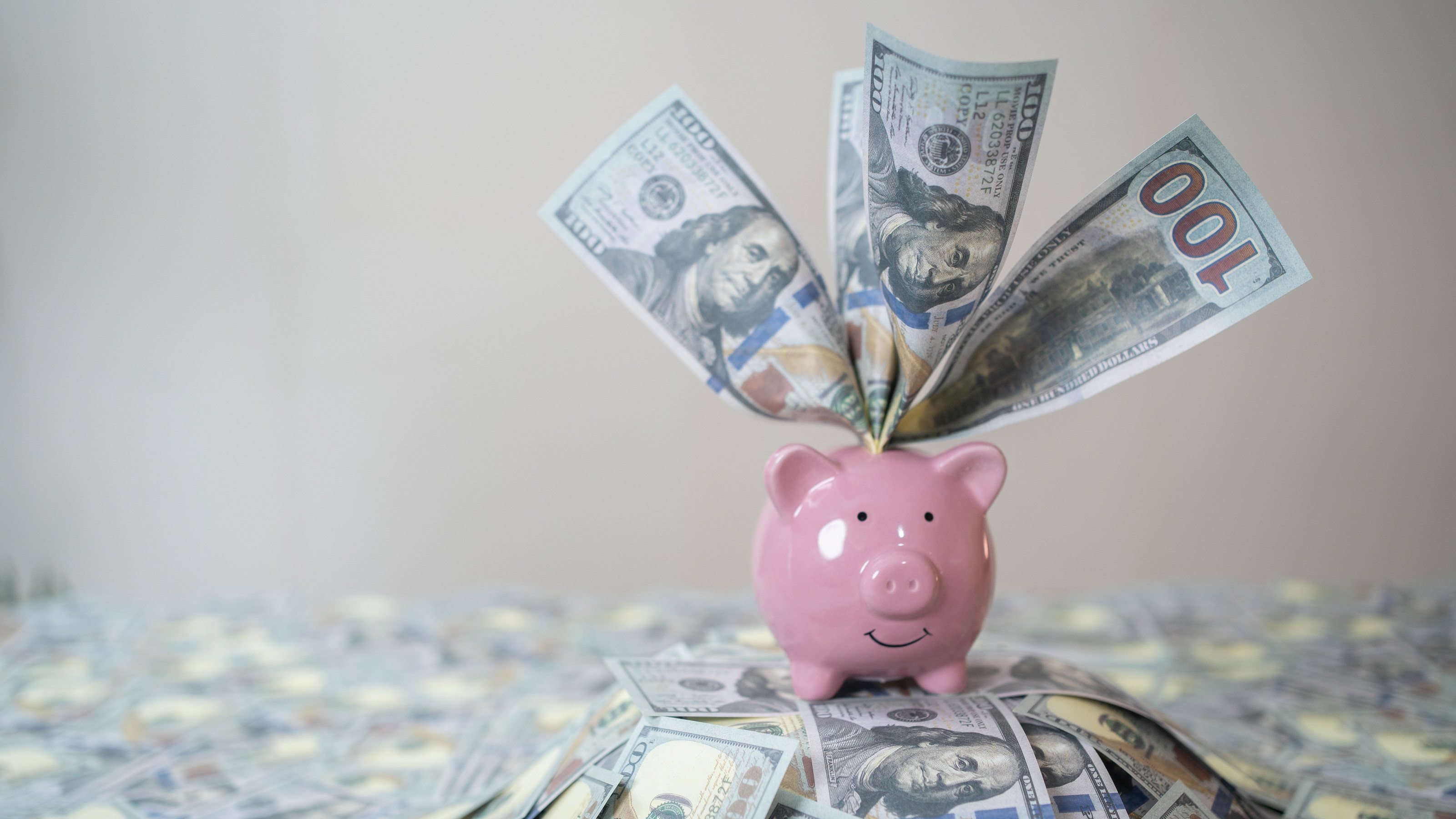What Would Happen if You Put Your Tax Refund in an IRA?
Not only could you get a tax break, but the compounding effect over 35 years could turn the average refund into nearly $14,000.


Tax refunds aren’t free money — they’re your money. While most people use tax refunds to pay bills or build savings, there’s an overlooked strategy that could significantly boost your long-term wealth: investing your refund into a traditional IRA.
As CEO of PensionBee, I’ve seen how easy it is to put retirement savings on the back burner. But I’ve also seen how small, strategic decisions — such as using a tax refund to fund an IRA — can lead to a much stronger financial future.
This tax season, rethink what’s possible. Instead of spending your refund, make it work for your future.
From just $107.88 $24.99 for Kiplinger Personal Finance
Become a smarter, better informed investor. Subscribe from just $107.88 $24.99, plus get up to 4 Special Issues

Sign up for Kiplinger’s Free Newsletters
Profit and prosper with the best of expert advice on investing, taxes, retirement, personal finance and more - straight to your e-mail.
Profit and prosper with the best of expert advice - straight to your e-mail.
A smarter strategy for your refund
The average tax refund this year, according to IRS data through March 7, is $3,324. Many see a high refund as a financial boost, but in reality, it’s money you overpaid throughout the year.
Ideally, you’d adjust your withholdings to keep more of your paycheck. Especially if it’s money you could use throughout the year to cover essential costs.
But if you do get a refund, the question is: What’s the smartest way to use it?
Insight into Americans’ use of their tax refunds typically reflects a desire to spend money on essentials like bills, groceries, savings and debt repayment. Only a few consider retirement — and that’s a missed opportunity.
A traditional IRA offers a unique tax advantage: Contributions lower your taxable income, reducing how much you owe and often increasing your refund. That means reinvesting your refund into your IRA creates a powerful cycle of tax savings and compounding growth.
How an IRA contribution saves you money today
Traditional IRAs aren’t just about your future security — they can put money back in your pocket now. Here’s how:
- Your employer withholds taxes based on estimated income, but IRA contributions throughout the year can change that calculation in your favor.
- This happens because IRA contributions reduce your taxable income, often leading to a lower tax bill or bigger refund.
- The IRS rewards retirement savers who use traditional IRAs with deductions that can drop your taxable income, helping you keep more of your hard-earned money.
By simply funding a traditional IRA, you create a tax benefit. Once you receive your tax refund … that’s when the real magic happens: You can reinvest it in your IRA. It’s here that you unlock the real potential of your money.
The power of compounding: Turn a refund into real wealth
Your traditional IRA is an investment vehicle for your personal retirement savings. At PensionBee, we make it easy for you to invest in your IRA by offering five simple portfolio options. Each is designed to benefit from long-term market gains.
Historically, the average rate of return for an IRA is about 5% without accounting for inflation. That’s where the real opportunity lies. It means that each year that you get a return on your initial investment, you also get a return on your return.
Over time, this creates exponential growth.
Here’s an example:
- If you contributed the average tax refund amount of $3,324 into an IRA today, assuming a standard 5% return (without inflation) and an average 0.85% management fee, it could grow 50% to $4,992 in just 10 years.
- In 15 years, you would have made nearly 85% of your original refund check, landing you at $6,117, and in 17 years, your money would double.
- In 25 years, you’d have $9,186.
- In 35 years, you’d have $13,795.
And that’s just one year’s refund. Imagine doing that every year. The impact could be game-changing.
Retirement security is financial security
America’s financial picture can appear stark. Millions of Americans supplement their income with high-interest debt. Nearly two-thirds of Americans feel like they live paycheck to paycheck — including high earners.
While many people understand the benefit of paying off credit card debt and building up emergency savings, few recognize the immediate impact of a retirement account on financial well-being.
However, the retirement picture is just as worrisome.
According to the Survey of Consumer Finances (SCF), roughly 1 in 2 households (46%) have no retirement savings at all. Worse, 7 in 10 American workers are not confident that they will be able to retire or retire on their chosen timeline.
Younger generations, struggling to cover day-to-day costs, have largely deprioritized retirement. For example, only 1 in 5 Gen Zers has started saving for retirement, while about the same percentage of them believe they’ll never retire.
Even though the retirement landscape is undoubtedly changing with discussions around Social Security legislation and the SECURE 2.0 Act, what hasn’t changed is the role of retirement accounts in securing broader financial prosperity.
Make your taxes work for you
A tax refund isn’t a windfall — it’s your money. Used wisely, it can be a powerful tool to build wealth. By contributing to an IRA, you power your tax bill today and set yourself up for a stronger financial future.
Instead of treating your refund as a bonus, think of it as an investment opportunity. Make this tax season the one where you take control of your retirement savings — and reap the benefits for decades to come.
Related Content
- IRS Income Tax Refund Schedule 2025: When Will Your Refund Arrive?
- Seven Ways to Spend Your Tax Refund
- Where's My Refund? How to Track Your Tax Refund Status
- Five Steps to Answer Your Million-Dollar Retirement Question
- How to Avoid These 10 Retirement Planning Mistakes
Profit and prosper with the best of Kiplinger's advice on investing, taxes, retirement, personal finance and much more. Delivered daily. Enter your email in the box and click Sign Me Up.

Romi Savova is the founder and CEO of Pension Bee, a leading online retirement provider she launched in 2014 after experiencing firsthand the complexity of workplace retirement account transfers. Driven by her vision to simplify retirement saving for the mass market, Romi has transformed Pension Bee into a trusted brand with over $7 billion in assets under management and more than 260,000 customers.
-
 Gold and Silver Shine as Stocks Chop: Stock Market Today
Gold and Silver Shine as Stocks Chop: Stock Market TodayStocks struggled in Friday's low-volume session, but the losses weren't enough to put the Santa Claus Rally at risk.
-
 Don't Wait Until January: Your Year-End Health Checklist to Kickstart 2026
Don't Wait Until January: Your Year-End Health Checklist to Kickstart 2026Skip the fleeting resolutions and start the new year with a proactive plan to optimize your longevity, cognitive health, and social vitality.
-
 Premium Rewards Cards: More Perks, Higher Fees
Premium Rewards Cards: More Perks, Higher FeesSome issuers are hiking the annual fee on their flagship luxury credit cards by hundreds of dollars. Are they still worth using?
-
 Gold and Silver Shine as Stocks Chop: Stock Market Today
Gold and Silver Shine as Stocks Chop: Stock Market TodayStocks struggled in Friday's low-volume session, but the losses weren't enough to put the Santa Claus Rally at risk.
-
 Your Year-End Wellness Checklist for a Healthier 2026
Your Year-End Wellness Checklist for a Healthier 2026Skip the fleeting resolutions and start the new year with a proactive plan to optimize your longevity, cognitive health, and social vitality.
-
 3 Trips to Escape the Winter Doldrums, Including An Epic Cruise
3 Trips to Escape the Winter Doldrums, Including An Epic CruiseThree winter vacation ideas to suit different types of travelers.
-
 How to Master the Retirement Income Trinity: Cash Flow, Longevity Risk and Tax Efficiency
How to Master the Retirement Income Trinity: Cash Flow, Longevity Risk and Tax EfficiencyRetirement income planning is essential for your peace of mind — it can help you maintain your lifestyle and ease your worries that you'll run out of money.
-
 I'm an Insurance Expert: Sure, There's Always Tomorrow to Report Your Claim, But Procrastination Could Cost You
I'm an Insurance Expert: Sure, There's Always Tomorrow to Report Your Claim, But Procrastination Could Cost YouThe longer you wait to file an insurance claim, the bigger the problem could get — and the more leverage you're giving your insurer to deny it.
-
 Could a Cash Balance Plan Be Your Key to a Wealthy Retirement?
Could a Cash Balance Plan Be Your Key to a Wealthy Retirement?Cash balance plans have plenty of benefits for small-business owners. For starters, they can supercharge retirement savings and slash taxes. Should you opt in?
-
 Changes Are Coming for This Invesco Bond Fund
Changes Are Coming for This Invesco Bond FundThe Invesco BulletShares 2026 Corporate Bond ETF's bonds will mature in 2026. Here's what investors should do.
-
 What Science Reveals About Money and a Happy Retirement
What Science Reveals About Money and a Happy RetirementWhether you’re still planning or already retired, these research-based insights point the way to your best post-work life.